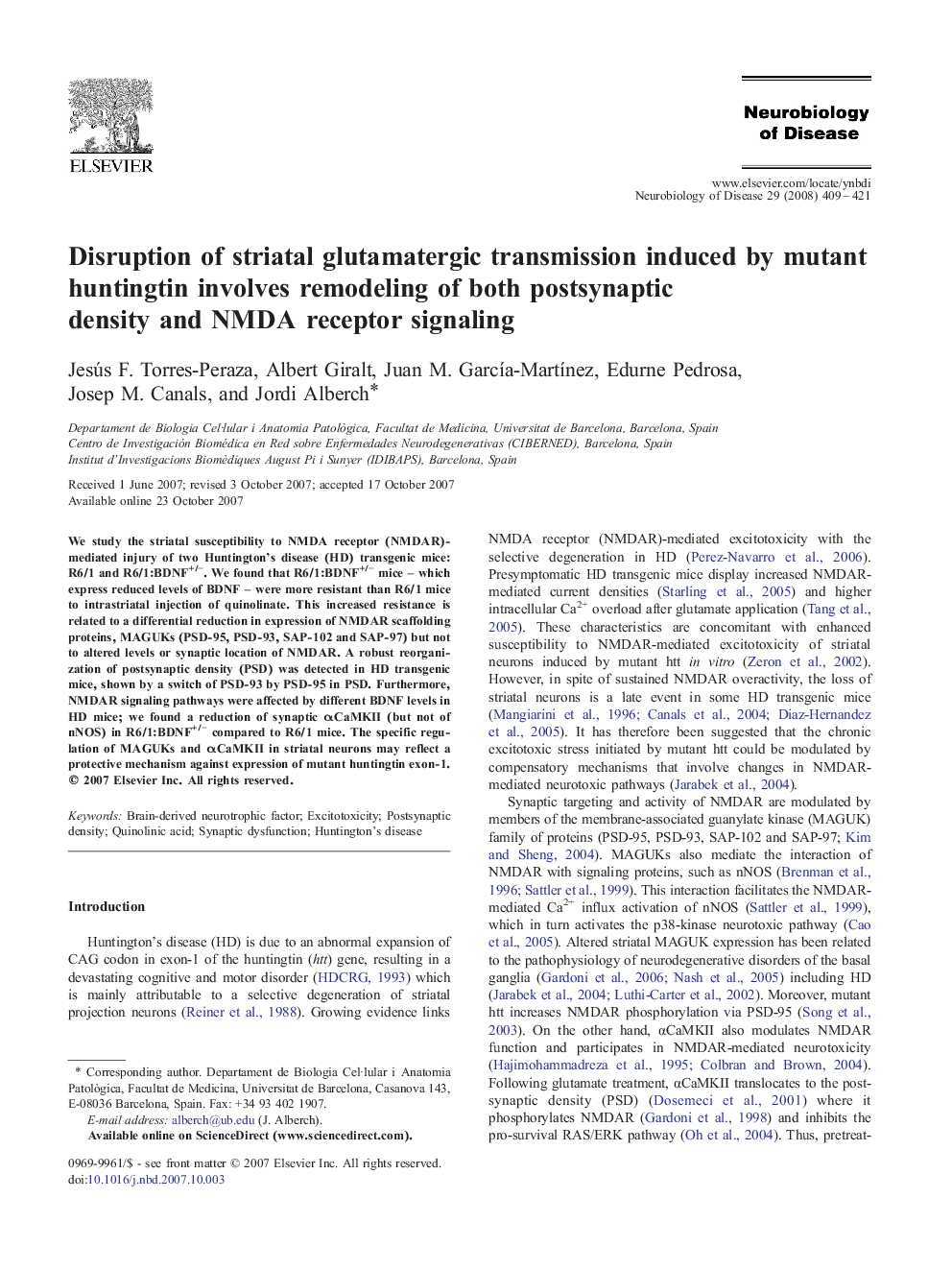| کد مقاله | کد نشریه | سال انتشار | مقاله انگلیسی | نسخه تمام متن |
|---|---|---|---|---|
| 3070567 | 1580733 | 2008 | 13 صفحه PDF | دانلود رایگان |

We study the striatal susceptibility to NMDA receptor (NMDAR)-mediated injury of two Huntington’s disease (HD) transgenic mice: R6/1 and R6/1:BDNF+/−. We found that R6/1:BDNF+/− mice – which express reduced levels of BDNF – were more resistant than R6/1 mice to intrastriatal injection of quinolinate. This increased resistance is related to a differential reduction in expression of NMDAR scaffolding proteins, MAGUKs (PSD-95, PSD-93, SAP-102 and SAP-97) but not to altered levels or synaptic location of NMDAR. A robust reorganization of postsynaptic density (PSD) was detected in HD transgenic mice, shown by a switch of PSD-93 by PSD-95 in PSD. Furthermore, NMDAR signaling pathways were affected by different BDNF levels in HD mice; we found a reduction of synaptic αCaMKII (but not of nNOS) in R6/1:BDNF+/− compared to R6/1 mice. The specific regulation of MAGUKs and αCaMKII in striatal neurons may reflect a protective mechanism against expression of mutant huntingtin exon-1.
Journal: Neurobiology of Disease - Volume 29, Issue 3, March 2008, Pages 409–421